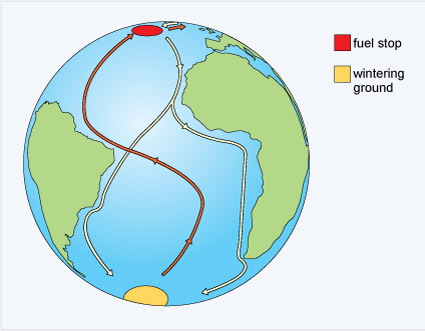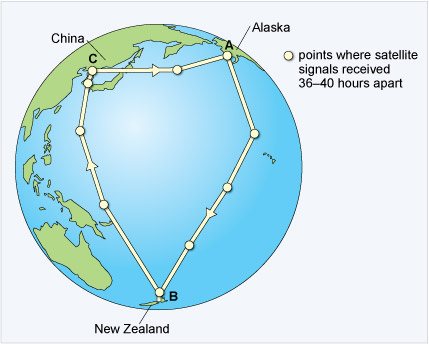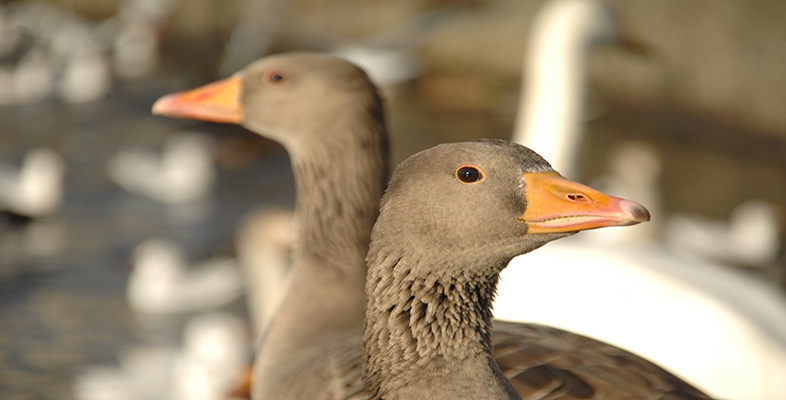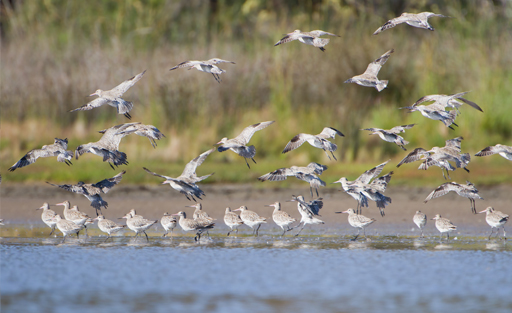1.1 Examples of animal migration
The humpback whale travels further than any other mammal (Video 2).
Transcript: Video 2 The humpback whale (Megaptera novaeangliae).
Travelling long distances over land may mean coping with a changing terrain. The migratory route of the bar-headed goose (Anser indicus) takes it over the peaks of the Himalayas at an altitude of around 9000 m (Video 3). The altitude record for a bird is 11 227 m, held by a griffon vulture.
Transcript: Video 3 The bar-headed goose.
[MUSIC PLAYING]
[GEESE HONKING]
[HONKING AND CHEEPING]
Even with a long distance to cover, the arctic tern does not take a direct route and also makes a stop in the North Atlantic to feed on plankton (Figure 3).

One of the most amazing of all bird migrations is undertaken by the bar-tailed godwit (Limosa lapponica), a wading bird, frequently found in marshes or mudflats where it forages for food (Figure 4).
It has been possible to tag individuals with satellite transmitters that encode position data on a radio signal, a process called telemetry. The data obtained from one bird showed that it had travelled 11 680 km (7258 miles), non-stop, over nine days to reach New Zealand from the Alaskan breeding grounds (Figure 6). This bird (E7) flew at an average speed of 56 km per hour (34.8 miles per hour) at an altitude of 3000-4000 m. Along the way, she lost more than half her body mass. The reasons for this extraordinary journey are the same for the majority of bird and other animal migrations - to increase both survival and reproductive success.

For some species, there may be no opportunity to learn a route prior to setting off. Young ospreys born on Martha's Vineyard, an island off the east coast of Massachusetts, do not migrate with their parents but set off alone to spend the winter in Central or South America (Video 4). They are thought to find their way by flying southwards, keeping over land. It may be 18 months before they make the return trip.
Transcript: Video 4 The ospreys of Martha's Vineyard.
[MUSIC PLAYING]
[MUSIC PLAYING]

